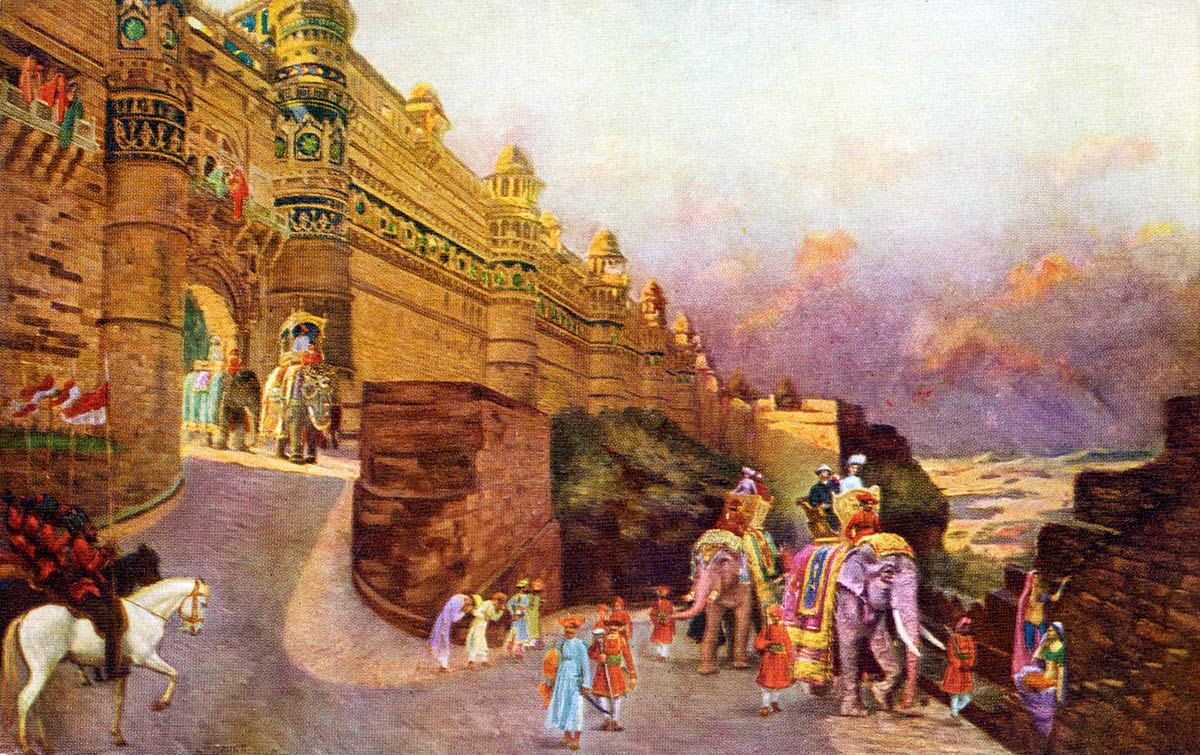Overview
In a proud moment for India, Gwalior, a charming town in the heart of Madhya Pradesh, has earned the esteemed title of ‘City of Music’ from the United Nations Educational, Scientific and Cultural Organisation (UNESCO) through the UNESCO Creative Cities Network (UCCN).

This recognition marks Gwalior as the second Indian city to receive this honour, with Chennai being the first. Additionally, Kozhikode, a town in Kerala, has also been bestowed with the distinguished title of ‘City of Literature.’ The inclusion of these two Indian cities among the 55 cities worldwide is a source of massive joy and pride for every Indian.
The Journey to this Feat
Gwalior was recognised for its unwavering commitment to ‘harnessing culture and creativity‘.
The Madhya Pradesh Tourism Board spearheaded the endeavour with the Municipal Corporation of Gwalior, Gwalior Smart City Development Corporation Limited, Raja Mansingh Tomar Music & Arts University, music artists, and various stakeholders.

Since 2019, continuous efforts, including multiple stakeholder consultations and a comprehensive feasibility study of the city, were undertaken to assess Gwalior’s prospects for UCCN membership. The application was then meticulously drafted. Gwalior stands as a testament to living cultural heritage and hosts one of India’s largest annual music festivals, the Tansen Sangeet Samaroh, celebrating the rich culture of Madhya Pradesh.
On World Cities Day, UNESCO Director-General Audrey Azoulay designated 55 new cities to join the UNESCO Creative Cities Network (UCCN). These cities were recognised for their dedicated commitment to integrating culture and creativity into their development strategies, showcasing innovative approaches in human-centred urban planning.
Mr Sheo Shekhar Shukla, the Principal Secretary of the Tourism and Culture Department, remarked that the inclusion of Gwalior by UNESCO under the Creative Cities Network is undoubtedly a substantial boost, highlighting the cultural richness of Madhya Pradesh to the world.
He accentuated that Gwalior, recognised as the city of Tansen, Baiju Bawra, the birthplace of Dhrupad Music form, and Gwalior Gharana, has unfailingly conserved and preserved its musical practices and traditions.
The UNESCO honour, he noted, will unquestionably attract global attention to the cultural diversity and richness of Madhya Pradesh, particularly Gwalior. He anticipates this acknowledgement will enrich international tourism, spotlighting the city’s architectural and heritage assets.
Gwalior-A melodic beauty
Gwalior has gained global recognition for its profound musical heritage, particularly the renowned ‘Gwalior Gharana‘—the premier and oldest lineage of ‘Khyal‘ singing in Hindustani music. The roots of all music gharanas in the country can be traced back to the Gwalior Gharana, making it the most ancient and the ‘Gongotri‘ (origin) of Khyal raga.

The musical tradition of Gwalior gharana flourished under the patronage of the erstwhile royal families of Gwalior, including Raja Mansingh and the Scindias. The city, known for legends like Sangeet Samrat Tansen and Baiju Bawra, is a sought-after destination for learning Indian classical music from eminent musicians, following the traditional Guru-Shishya parampara (teacher-disciple tradition), which also serves as a livelihood for musicians.
The Mellifluent Musician-Tansen
Mian Tansen, originally named Ramatanu and born to a poet and musician, emerged as one of Gwalior’s early prodigies. In the early 16th century, he underwent training under Swami Haridas, a practitioner of Dhrupad. The influential Sufi saint Mohommad Ghous also played a significant role in shaping Tansen’s musical journey.
Under Ghous’s guidance, Tansen refined the distinctive style of the Gwalior Gharana and served as the court musician for King Ram Chandra Singh of Rewa, Madhya Pradesh, for an ample period.

Tansen’s musical brilliance and knowledge gained widespread recognition, reaching the ears of Akbar, who invited him to join the Mughal court as one of his court musicians. Initially reluctant, he eventually accepted the invitation at the insistence of King Ram Chandra. Entering the court at 60, Tansen became the most prominent musician in Akbar’s court, one of the Navaratnas (9 gems). Akbar’s admiration for Tansen is well-documented in various writings, and the musician’s legacy continues to resonate in popular culture.
Abul Fazl’s Ain-i-Akbari notes that out of the 36 imperial musicians, 15 hailed from Gwalior, highlighting the city’s significant contribution to the Mughal musical landscape.
What is UNESCO’s UCCN?
The UNESCO Creative Cities Network (UCCN) was established in 2004 to foster collaboration among cities that recognise creativity as a crucial element for sustainable urban development.
The nearly 350 cities worldwide, spanning over a hundred countries comprising this Network, collaborate with a shared objective—to prioritise creativity and cultural industries in their local development strategies and actively engage in international cooperation.
Several Indian cities have earned a spot in the UNESCO Creative Cities Network (UCCN), each celebrated for its distinctive creative contributions. Jaipur was honoured as a Creative City of Crafts and Folk Arts in 2015, while Varanasi claimed the title of Creative City of Music in the same year. Chennai followed suit in 2017, recognised as a Creative City of Music. Mumbai joined the ranks 2019 as a Creative City of Film, and Hyderabad secured its position as a Creative City of Gastronomy in the same year. Srinagar, in 2021, joined the Network as a Creative City of Crafts and Folk Art. These cities are vibrant hubs, showcasing India’s diverse and rich cultural heritage in various artistic realms.
Also Read: Kannada Rajyotsava: Embracing Unity, Heritage, and Cultural Splendor












Comments 1